This article was originally published on Medium
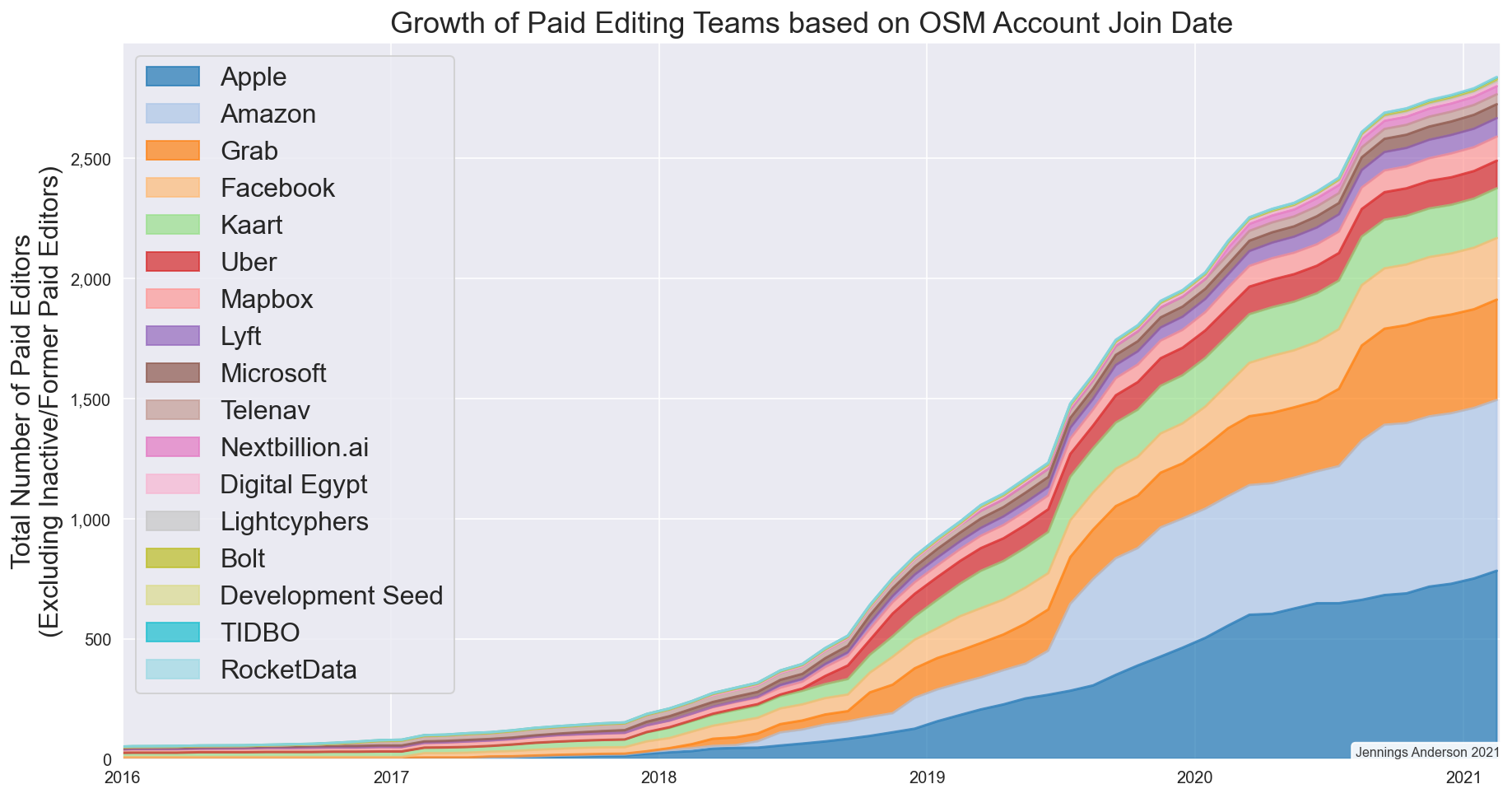 Paid contributions to the OpenStreetMap and other highly valuable collaborative and FOSS projects have been on the rise¹, reflecting the enormous economic value of volunteer work, flowing into the for-profit sector. Source: Jennings Anderson’s Diary | A 2021 Update on Paid Editing in OpenStreetMap.
Paid contributions to the OpenStreetMap and other highly valuable collaborative and FOSS projects have been on the rise¹, reflecting the enormous economic value of volunteer work, flowing into the for-profit sector. Source: Jennings Anderson’s Diary | A 2021 Update on Paid Editing in OpenStreetMap.
A novel community economic system, designed to capture the economic value of volunteer work is showing ability to generate income for, and incentivize people to work on volunteer projects. The inflow of money and labor is made possible by a new type of “volunteer” currency, anybody can earn for their voluntary work. The currency can be purchased with national currencies, which allows using it as an universal proof of commons-benefiting contribution. Volunteer project owners can consequently demand such a proof for access to their products, in a way that is community building and commons-enhancing.
In my previous article, I wrote among other things about the chronic lack of funding, faced by the maintainers of FOSS, collaborative and other volunteer projects, and attempted to explain its cause. I also pointed out that most of the projects are underfunded, regardless of collectively generating over a trillion USD/year of estimated economic value. I ended the article by suggesting there might be a way to satisfy the instinctive desire of volunteers to share their work widely, without giving away the economic value of their products. In this article I show on real-world examples, how the community economic system Neo, through its implementation Rovas, is addressing that goal.
Intuition suggests, that sharing volunteer work broadly and capturing its economic value at the same time might be impossible, but schemes attempting such a feat exist. One example is a class of “dual” software licenses used in the FOSS domain, which generally require payments from the for-profit consumers, while allowing free access to everybody else. The approach to a large degree addresses the two requirements, but it has some problems. First, it provides little incentives to the non-paying consumers to contribute back to the commons, which is a lost opportunity to make the scheme viral. Second, there is no “natural” way to assign consumers into the two categories, as both — the classification property, as well as its value — must be determined in an ad-hoc manner. The scheme has also an ideological problem— why should anybody be excluded from the obligation to reciprocate in the first place? Reciprocity is crucial for any functioning socioeconomic arrangement, whether it is a small group of people exchanging gifts or services or the global market economy.
The NEO approach, in contrast enforces reciprocity, by asking all consumers for a proof of own contribution to the commons, before granting them access to volunteer-made products. Recognizing the huge diversity in types of volunteer activities, and the fact that contributions can have also pecuniary form, NEO accepts as a proof of own contribution a payment in Chrons— a new type of currency, “minted” in Rovas, whenever a voluntarily-chosen and provably performed work is reported there². The currency can be earned by any type of work³ that is socially acceptable, has not been rewarded elsewhere, and a product of which can be bought or rewarded in Rovas. Consumers can also purchase Chrons for Euros or other national currencies. Reporting is done by filling a form in Rovas, but the task can be completely eliminated, by having 3rd party productivity applications⁴ used by volunteers, to create the reports automatically by the way of the Rovas API.
The ability to easily earn Chrons for any type of work makes them potentially available to anyone, which addresses the important requirement of providing consumers as broad access to volunteer products as possible. To simultaneously capture the economic value of the products however, additional conditions must be met. The products prices must be established, and they must be acceptable to the majority of consumers. Asking volunteers to set prices for their products is for reasons outlined in my first article generally out of the question, but the work can be delegated to the consumers themselves. The price-finding effort can be crowdsourced, by combining the familiar Pay What You Want mechanism with voting, in the following way:
First, an individual consumer is notified that they can consume a given product by paying a price they set themselves, but in the end will have to pay a potentially different one, determined by the majority of the other consumers. Practically, the consumer first makes a payment of a chosen amount — in effect casting a vote about the value of the product. A suitable criterion commences the voting at some point (say a given number of votes is reached), and the most popular price (equal to the mode of all votes) is set as the final price of the product. In the last step, Rovas “claws back” the difference between the final price and the amount paid by the consumers who paid less, and sends these funds to the consumers who paid more than the final price. Consumers representing groups of more than one person (like the for-profit companies) pay the final price, multiplied by the number of the group members. The mechanism prevents free riding, and at the same time spares the product creator from having to come up with a price.
The difficult part of any strategy attempting to monetize volunteer work is to motivate volunteers to enable access to their products to only reciprocating consumers. Asking for “normal” money limits the numbers of potential customers, which goes against the desire to share as widely as possible. Even requiring a payment in Chrons is — for the time being — limiting, as at this stage of NEO adoption, few people hold the currency. NEO does provide a reputation-like, non-transferable Merit reward that is expected to incentivize project owners to demand a payment for their products, but the individual Merit score too, is not yet desirable enough to overcome the reluctance to limit access. The “instinct” to share is however not felt equally strongly by all. It is not uncommon to see volunteers setting conditions on use of their work that constrain the pool of consumers. This is evidenced by for example the existence of restrictive software licenses, used in the FOSS context or blog posts and other publicized opinions, voicing discontent with exploitation of volunteer work by corporations. It is people like these who are the most likely candidates to start using NEO, especially after they learn about its strong pro-commons character, the ability to motivate people to help, and to raise money for volunteer projects. Two real-world examples illustrate, how NEO has been delivering such outcomes.
Case 1 — the soft monetization option
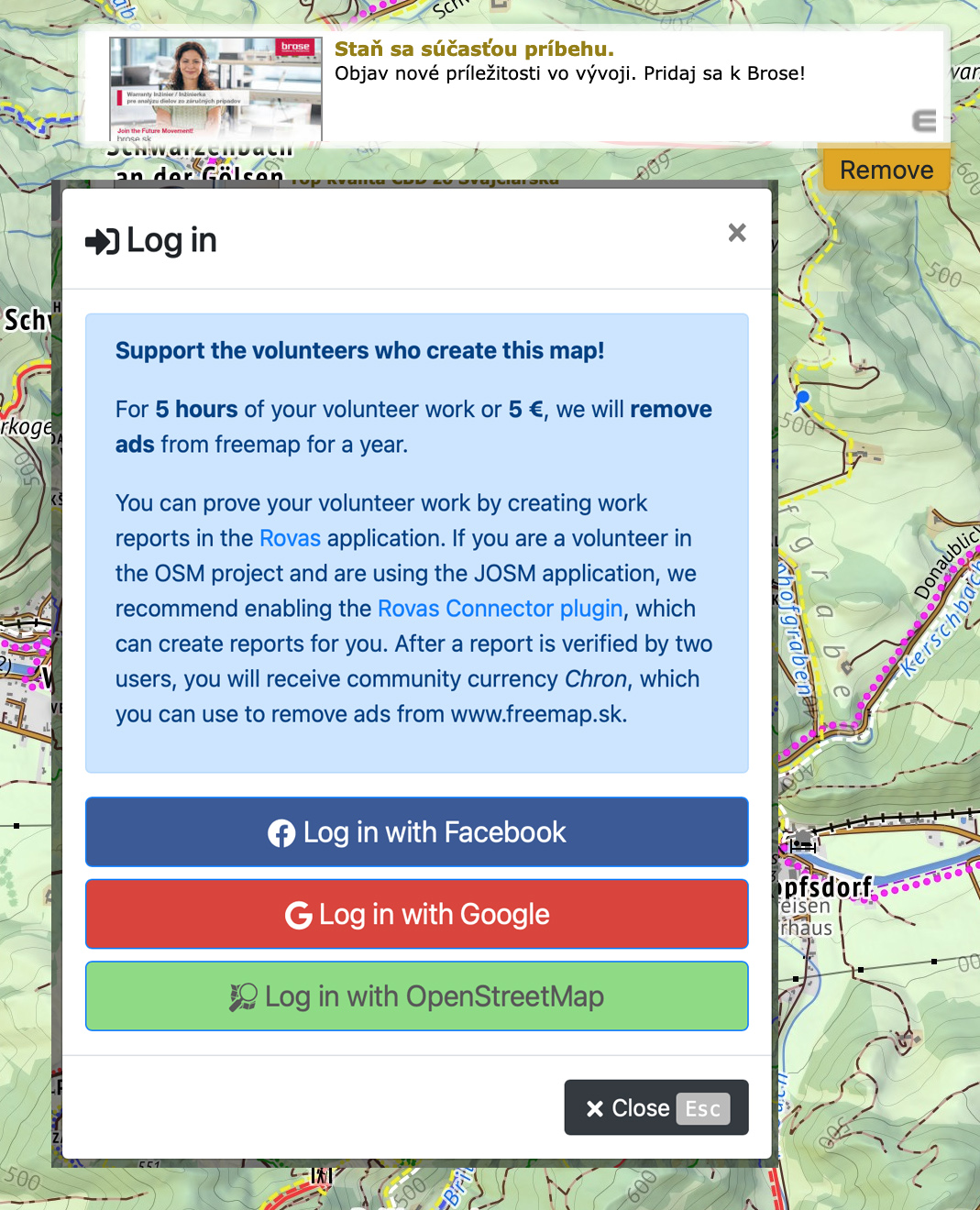 Clicking the Remove hyperlink below the ad block in the freemap.sk application, allows the site visitors to get rid of the block by performing volunteer work or by making a monetary contribution to the project
Clicking the Remove hyperlink below the ad block in the freemap.sk application, allows the site visitors to get rid of the block by performing volunteer work or by making a monetary contribution to the project
A visitor to freemap.sk — one of the best volunteer-made map web applications today — will notice that an ad block in the application contains a “Remove” hyperlink. When they click it a dialog box appears, letting them know that 5 hours of own volunteer work reported in Rovas or a payment of 5 Euro, will remove the ad block from the application for a year. Implementing the function took very little programming effort in Freemap, but resulted in quadrupling the income received from running just the ads. The scheme might not seem much different form offering consumers a paid subscription tier, but integrating Rovas delivered some important benefits. For one, in the first year since the integration, about 10% of the users who choose to remove the ads by paying, sent more than the required minimum. The 2nd advantage is that the ability to pay with own volunteer work incentivizes people to offer help to the projects. In the Freemap case, this lead to one user offering help with programming, and motivated another to translate the application to Italian. Offers to help like these have not occurred in the over 10 year-long history of the site existence, and are directly attributable to the ability to gain privileged access by own volunteer work.
Case 2 — enforcing reciprocity
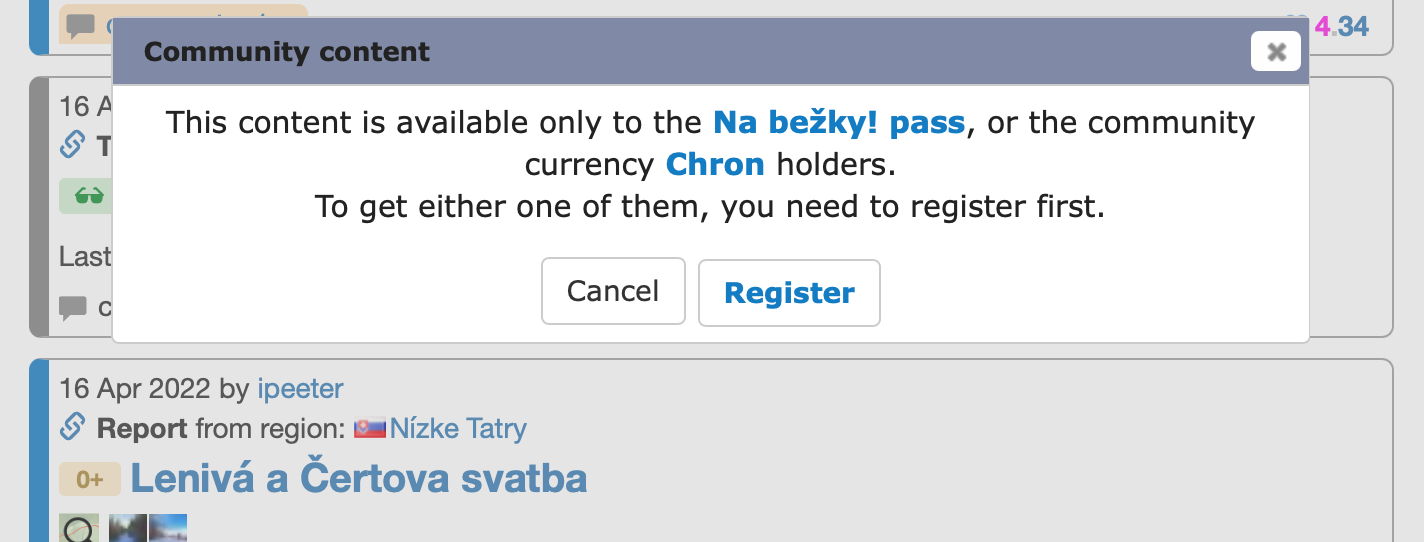 A visitor to the nabezky.sk site, lacking the proper privileges sees the message shown above, when attempting to read “community” (locked) content
A visitor to the nabezky.sk site, lacking the proper privileges sees the message shown above, when attempting to read “community” (locked) content
The web site for cross-country skiing enthusiasts nabezky.sk, took a more determined route to enforce reciprocity. The content of the site, consisting primarily of reports about skiing conditions posted by the site users, has been freely available for years, but as is usually the case with so called “crowdsourced” projects, only a fraction of the site visitors actually provided own reports. The realization lead to a decision made some 4 years ago, to allow the site reporters to make their content accessible only to consumers, willing to reciprocate with own volunteer work. Gradually, most of the site content became available only for a payment made in Chrons.
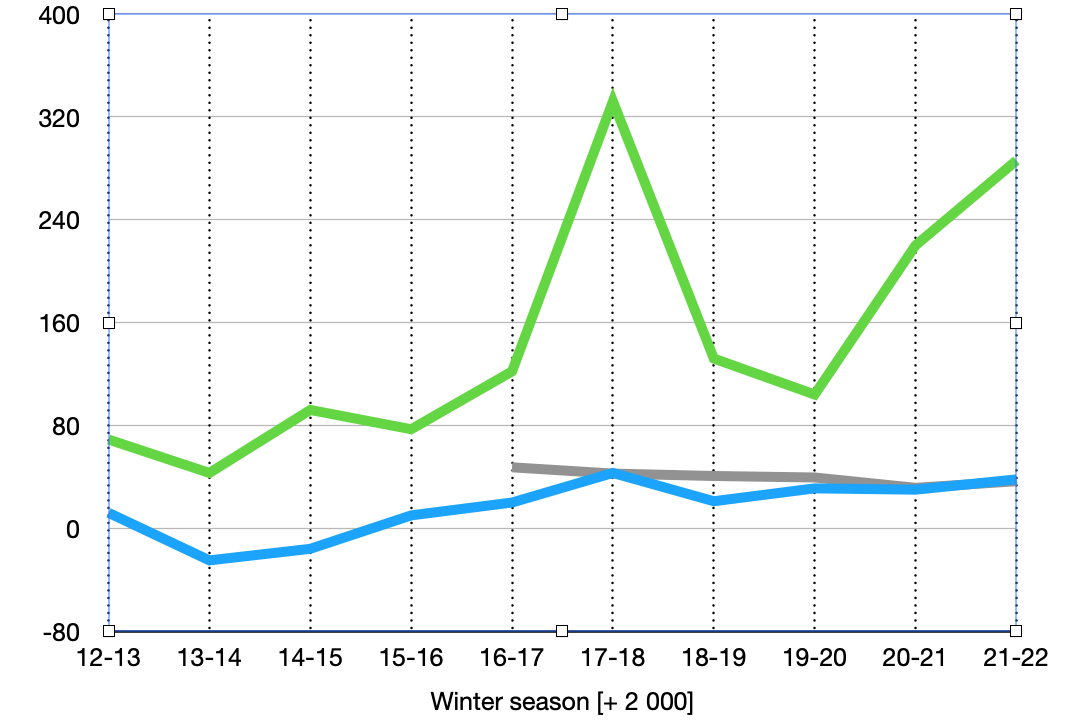 nabezky.sk statistics: Green: the number of contributors (with reports or money); Gray: the site visitors count, in thousands (data prior to 2016 is missing, but the trend is clearly decreasing, likely due to people using social media to share skiing info); Blue: the difference in the number of reports [%] when compared to the competing site bezkar.sk which is not locking reports. In the 2017–18 season a pilot experiment was run, testing the community content concept, which was not repeated during the following two seasons. The last two seasons show the effect of NEO-induced contributions, virtually all having the form of fees, paid for access to community content. 180 people purchased access in the most recent season.
nabezky.sk statistics: Green: the number of contributors (with reports or money); Gray: the site visitors count, in thousands (data prior to 2016 is missing, but the trend is clearly decreasing, likely due to people using social media to share skiing info); Blue: the difference in the number of reports [%] when compared to the competing site bezkar.sk which is not locking reports. In the 2017–18 season a pilot experiment was run, testing the community content concept, which was not repeated during the following two seasons. The last two seasons show the effect of NEO-induced contributions, virtually all having the form of fees, paid for access to community content. 180 people purchased access in the most recent season.
The outcome was qualitatively similar to the one we saw in freemap, but the magnitude of the benefits gained was greater. Since the Rovas was integrated to nabezky.sk, the number of users contributing money or reports more than doubled and several visitors offered help with the site development. The site gets about the same amount of traffic as the “Rovas-monetized” freemap.sk, but generated twice as much non-ad income in a comparable time frame (eight times the “baseline” revenue the site was getting just from ads). The “community” (locked) content on the nabezky.sk site is admittedly read by fewer people than the previously open one, but with the number of Rovas users growing, the number of consumers is likely to grow as well. Surprisingly, regardless of the decrease in the readers count, almost all of the nabezky reporters not only did not defect to a competing site offering similar (freely available) content, but are voluntarily turning their reports into community content themselves. The exact cause of this behavior is unclear, but perceptions of fairness given by the ability to gain access to the community content with own labor, club-like character of the site and other factors can be all important factors.
These cases show that volunteer projects can to various degrees capture the economic value they produce. The value can be reinvested back to make the volunteer-made products even more useful, which should attract new consumers and further increase inflow of resources, resulting in a positive feedback loop. The Rovas-integrated projects are thus likely to stand out and over time get noticed by other volunteers, who too might integrate Rovas into their projects. The individual Merit score is also expected to become more desired over time and motivate volunteers to require payments for their projects, further strengthening the feedback loop.
Other benefits
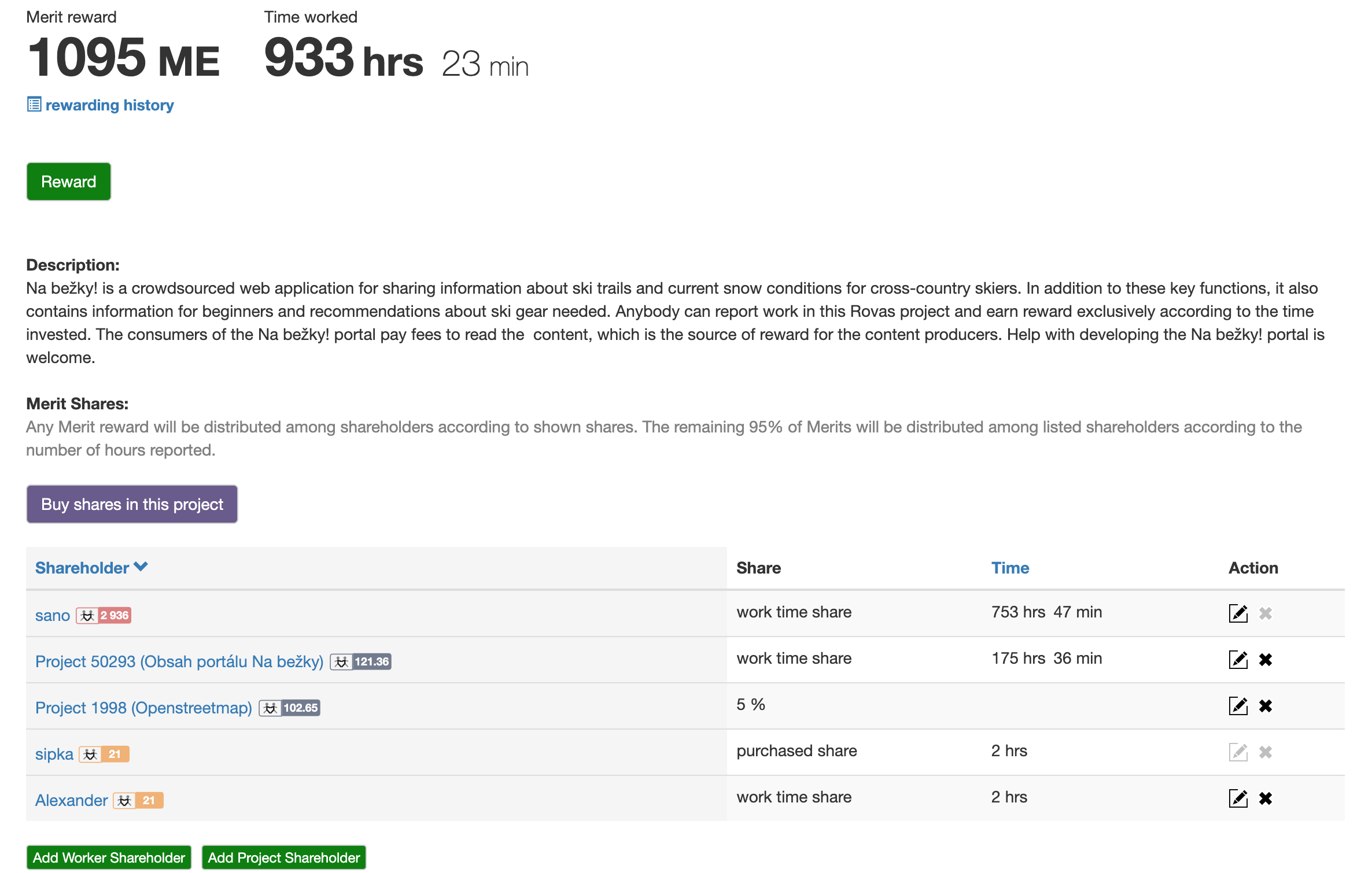 The shareholders section of the nabezky web project in Rovas shows three individual and two project shareholders. The project owner can add an unlimited number of shareholders of each type into their project.
The shareholders section of the nabezky web project in Rovas shows three individual and two project shareholders. The project owner can add an unlimited number of shareholders of each type into their project.
The Rovas economic engine offers additional benefits to volunteer projects, besides the ones already mentioned. One is related to the need to have work reports verified by two other users, before a Chron reward is issued to the reporting users. For example, in the OpenStreetMap project case, the need to verify reports leads to every map edit (changeset) made by the NEO user, being seen by two other mappers. While judging adequacy of the reported labor time, the verifiers see the changes made, which often leads to discussions between them and the reporting users, about quality of the edits. The report verification function thus directly contributes to increased quality of the whole project.
Worth mentioning is another feature, related to a problem of fair distribution of rewards between individual contributors or even other projects a rewarded project uses. Regardless of the rewards being material or related to reputation, Rovas offers an unique solution— an ability of the project owners to designate shareholders in their projects. Shareholders are individuals or other projects, who get rewarded whenever the projects they hold shares in get rewarded, with the shares being determined by either the total number of labor hours invested or by a percentage negotiated between the shareholder and the project owner. The shareholder projects themselves can have own shareholders, enabling fair and automatic flow of rewards, to all who contributed resources to any (sub)project. This way, for example, the nabezky site can automatically share a portion of every payment it receives with its content contributors, as well as with the Openstreetmap editors for their map data the site uses. The sharing function and other features are described in the Rovas rules.
Conclusion
The data gathered to date from the two described applications suggest that NEO and its economic engine Rovas can help volunteer projects to get more material and “human” resources. The mechanism is based on a liberal approach to the definition of work, custom “volunteer” currency, transparency of economic transactions and other features that make NEO uniquely suited for volunteer projects. The mechanism — unlike (say) other community currency-based systems — is not dependent on its users to believe in working for the commons. In NEO, reciprocity is enforced. As shown above, the degree of enforcement can be lightweight — having the form of a removable ad block — but it can be also more vigorously pursued, by actually blocking access to non-reciprocating consumers. Regardless of the method chosen, the goal is clear — ending the economic value giveaway, as the “instinct” that drives volunteers to share, benefits overwhelmingly the people who need it the least.
Using Rovas
To use the Rovas economic engine, web portals and applications can take advantage of several integration options. The most versatile one is the Rovas API which also requires most programming, but there are also the lighter-weight Rovas payment processor option and the very simple, PayPal-like Support/Donate button that everybody can place into their web site, or mobile application. Additional integration options, like modules or plugins for popular CMS-es are being planned. If interested and need help to start, do not hesitate to contact us. We might be able to help also with coding your integration.
Notes
- Another example — contributions to the Linux project from unpaid developers have declined to less than 8% in 2014, with most development today coming from paid programmers. I haven’t found more recent data, but the volunteer share is very likely even smaller today.
- Questions, like how do people report work, or how does the system ensure the reported work was actually performed are covered in the Rovas rules and other writing concerning NEO.
- A common objection to this freedom is that people will perform useless work just to earn the currency. This however is a fallacy, as for example hobbyist or volunteers who can choose their field of work freely, always try to produce goods or services useful to others. The desire to satisfy our basic needs for competence and relatedness always guide our work choices to produce useful output.
- A good example of such an integration is the Rovas Connector plugin for the JOSM application, used by volunteer mappers of the OpenStreetMap project
